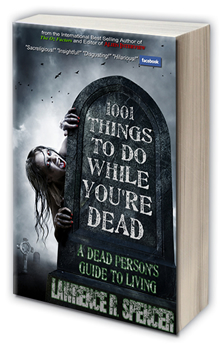Republished by Blog Post Promoter
Tag Archives: ghosts
In The Shadow
Republished by Blog Post Promoter
“Dans l’ombre”, “In the shadow”. Short film. from Fabrice Mathieu on Vimeo.
WHO ARE THE REAL VAMPIRES?
Republished by Blog Post Promoter
A Vampire is an Immortal Spiritual Being. He or she cannot die. Yet, they cannot inhabit a living human body either. They are conceived to be dependent on beings who inhabit living bodies. Vampires worship and covet human bodies. Their depraved state of being includes the notion that “only beings who have a body can have a real life”. The idea that a disembodied spirit needs to drink the blood of a living human in order to have energy and longevity is part of the mythology about Spiritual Beings invented by priests attempting to frighten people away from disembodied spirits! PRIESTS do not want people to communicate with spirits! If you communicated with spirits directly, like gods and ghosts, priests would lose their power, wealth and control over you!
Of course, an Immortal Spirit is Immortal with or without a body. Learn more about how to live without a body in my book: 1,001 Things To Do While You’re Dead.
READ MORE ABOUT VAMPIRES ON WIKIPEDIA.ORG:
Tales of supernatural beings consuming the blood or flesh of the living have been found in nearly every culture around the world for many centuries. Today, we would associate these entities with vampires, but in ancient times, the term vampire did not exist; blood drinking and similar activities were attributed to demons or spirits who would eat flesh and drink blood; even the Devil was considered synonymous with the vampire. Almost every nation has associated blood drinking with some kind of revenant or demon, or in some cases a deity.
Ancient Greek and Roman mythology described the Empusae, the Lamia,and the Striges. Over time the first two terms became general words to describe witches and demons respectively. They were described as having the bodies of crows or birds in general, and were later incorporated into Roman mythology as strix, a kind of nocturnal bird that fed on human flesh and blood.
Vampires are mythological or folkloric beings who subsist by feeding on the life essence (generally in the form of blood) of living creatures, regardless of whether they are undead or a living person/being.Although vampiric entities have been recorded in many cultures, and may go back to “prehistoric times”,the term vampire was not popularized until the early 18th century, after an influx of vampire superstition into Western Europe from areas where vampire legends were frequent, such as the Balkans and Eastern Europe, although local variants were also known by different names, such as vrykolakas in Greece and strigoi in Romania. This increased level of vampire superstition in Europe led to mass hysteria and in some cases resulted in corpses actually being staked and people being accused of vampirism.
While even folkloric vampires of the Balkans and Eastern Europe had a wide range of appearance ranging from nearly human to bloated rotting corpses, it was interpretation of the vampire by the Christian Church and the success of vampire literature, namely John Polidori‘s 1819 novella The Vampyre that established the archetype of charismatic and sophisticated vampire; it is arguably the most influential vampire work of the early 19th century, inspiring such works as Varney the Vampire and eventually Dracula. The Vampyre was itself based on Lord Byron‘s unfinished story “Fragment of a Novel, published in 1819.
However, it is Bram Stoker‘s 1897 novel Dracula that is remembered as the quintessential vampire novel and which provided the basis of modern vampire fiction. Dracula drew on earlier mythologies of werewolves and similar legendary demons and “was to voice the anxieties of an age”, and the “fears of late Victorian patriarchy“.The success of this book spawned a distinctive vampire genre, still popular in the 21st century, with books, films, video games, and television shows.



